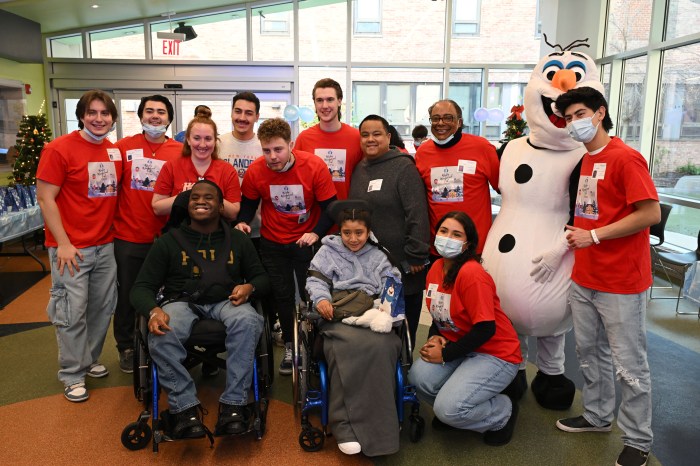Since she was 5 months old, 12-year-old Bayside resident Anna Palmieri has dealt with frontal lobe cortical dysplasia, a common form of epilepsy in which the top layer of the brain does not form properly.
According to her father, Marc Palmieri, this caused Anna to have thousands of seizures when she was asleep that he described as 90 seconds of “powerful, violent convulsions.” Marc said that the seizures were so powerful that he and his wife Kristen would take turns sleeping on the floor next to Anna to prevent her from injuring herself at night.
Even Anna’s younger sister Nora, who is two years her junior, would volunteer to put her hand on her sister’s forehead as she slept in the hope that it would stop the seizures from coming.
To regulate her epilepsy, doctors put Anna on a “cocktail” of up to seven different medications including valium, Dilantin and a host of other anti-seizure medication. But Marc said that none of these treatments stopped the seizures for long.

Marc shared that the “strange blessing” was that Anna’s seizures were limited to the nighttime, which allowed her to have a fairly normal childhood. The M.S. 158 student has been able to participate in Girl Scouts, student council, softball, volleyball and dance at the Robert Mann Dance Centre.
“Her life looked as normal as we could have hoped except that she was exhausted by nightly seizures,” said Marc.
But things took a turn last April when Anna felt the symptoms of a seizure happening when she was playing softball.
“I felt my heart race, chest cramp and my right arm went numb,” Anna told Weill Cornell Hospital. Her parents brought her to the emergency room, where doctors confirmed the Palmieris’ fears — that Anna’s seizures would begin happening during the day.
One night, Marc said that Anna woke up in the middle of the night with the right side of her body paralyzed. Doctors diagnosed Anna with Todd’s Paralysis, which causes fatigue and numbness on one side of the body after a seizure.
At that point, Anna, who was then an 11-year-old sixth-grade student, had been hospitalized three times over three weeks and faced the threat of “status epilepticus” — a condition where epileptic seizures happen one after the other without consciousness between them.
After Anna’s seizures had once again led her to the NewYork Presbyterian Komansky Hospital, the director of the Pediatric Epilepsy Program, Dr. Zachary Grinspan, referred the Palmieris to Dr. Caitlin Hoffman, a pediatric neurosurgeon “with advanced training in the surgical treatment of epilepsy.”
Dr. Hoffman, her colleague Dr. Theodore Schwartz and the rest of the pediatric epilepsy team at Weill Cornell successfully operated on Anna on June 18, 2018, and her father said she has been seizure-free ever since.
Marc credits their “village” of supporters with helping them through some of their toughest times.
When Anna had to miss two months of school last year, M.S. 158 sent them a Department of Education teacher to teach her at home. The school’s guidance department and her Girl Scout troop sent notes and stuffed animals when Anna was recovering from surgery. The Pastor at All Saints Church was present on the day of Anna’s surgery.

He added that the instructors at Anna’s dance school even allowed her to participate in her dance recital after she had started getting seizures in the daytime.
“If she wants to go on, she’s going on,” the instructors told Marc, and added that they would wait in the wings and remove her from the stage if she had an unexpected seizure.
Almost eight months later, Marc said that all of Anna’s EEG tests come back with “only normal readings.” He shared that though some fear may still linger in the back of their minds, the Palmieris’ lives have changed for the better. He said that he and his wife sleep better these days and Anna can go to her friends’ sleepovers now that constant observation is no longer necessary.
“We’re committing ourselves to the idea that this is something that may be over with,” Marc said.
The Palmieris were some of the honored guests at a Jan. 31 benefit event hosted by NewYork Presbyterian Hospital where $2 million was raised for new medical equipment for the hospital.





































